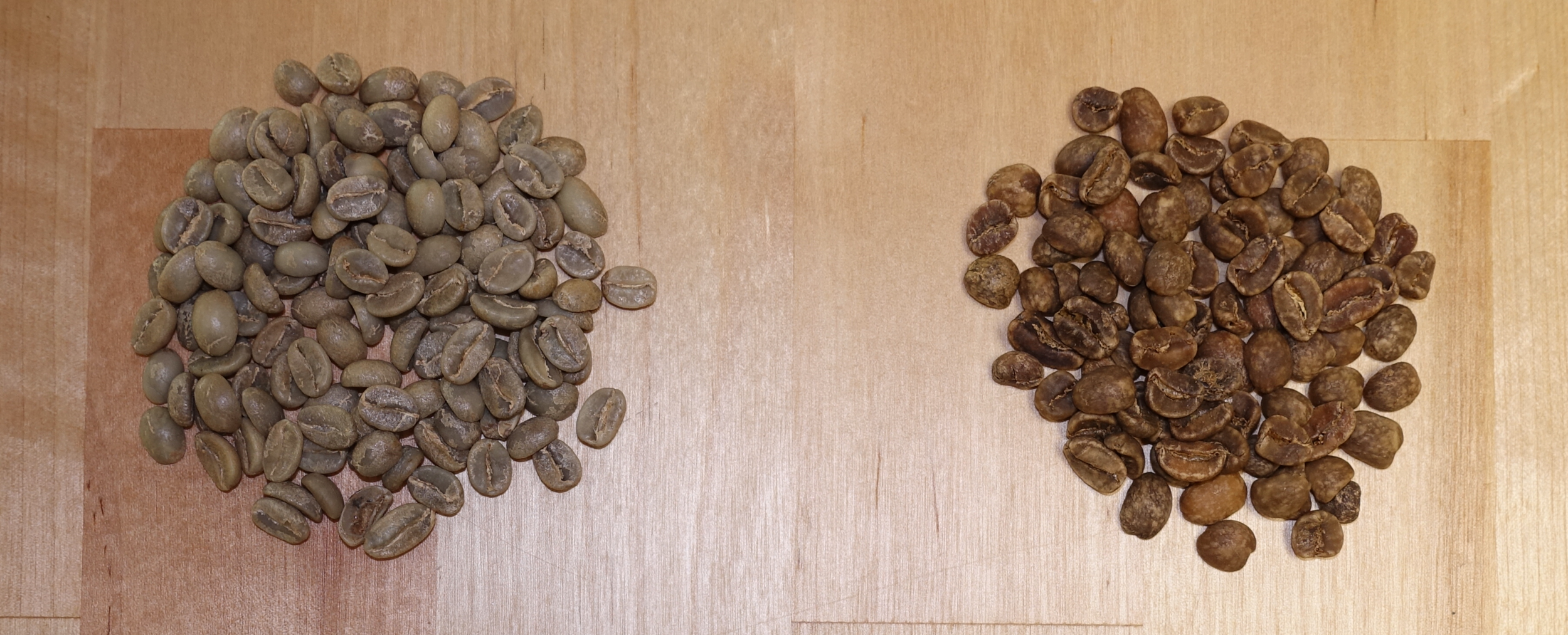Decaf: Espresso and Chill
There are many reasons why you may want to go easy on the caffeine. No matter the reason, our Mexico Decaf is a great choice for you: it's full of intense sweetness and chocolate flavors.
But how do we get rid of the caffeine you might wonder?
Well, the green coffee comes to us without caffeine. In our case, the decaffeination process even takes place at origin and uses only water as a decaffeinating agent.
In a first step, the green coffee is soaked in water for approximately one hour. During this time, the coffee absorbs the water and softens up.
As caffeine is water soluble, it is "washed out" into the surrounding water and then filtered off. The green coffee then needs to be dried again which takes about 20 hours.
When it is fully dried and stable, the green coffee doesn't look very green anymore but it's still unroasted. It may look different than our other green beans but we roast it just how we roast our other coffees.
We roast the Mexico Decaf for espresso in the same style as we roast our other espressos. So rather on the light side and still full of all the flavor nuances. Due to the soaking during decaffeinating, the bean structure is softened and the surface becomes more porous. This is why the oils which in light roasted coffees are usually trapped nicely within the beans reach the surface faster than usual.
In the picture below, you can see regular unroasted green coffee beans on the left and unroasted decaf beans on the right. Notice the different color and surface structure.
regular unroasted coffee beans on the left and decaffeinated unroasted coffee beans on the right
Of course, this description of decaffeinating is broken down a lot to make it simpler to understand in a first step. If you would like to learn more about the whole process, you can watch a video from Descamex and their Mountain Water Process by clicking on this link.

